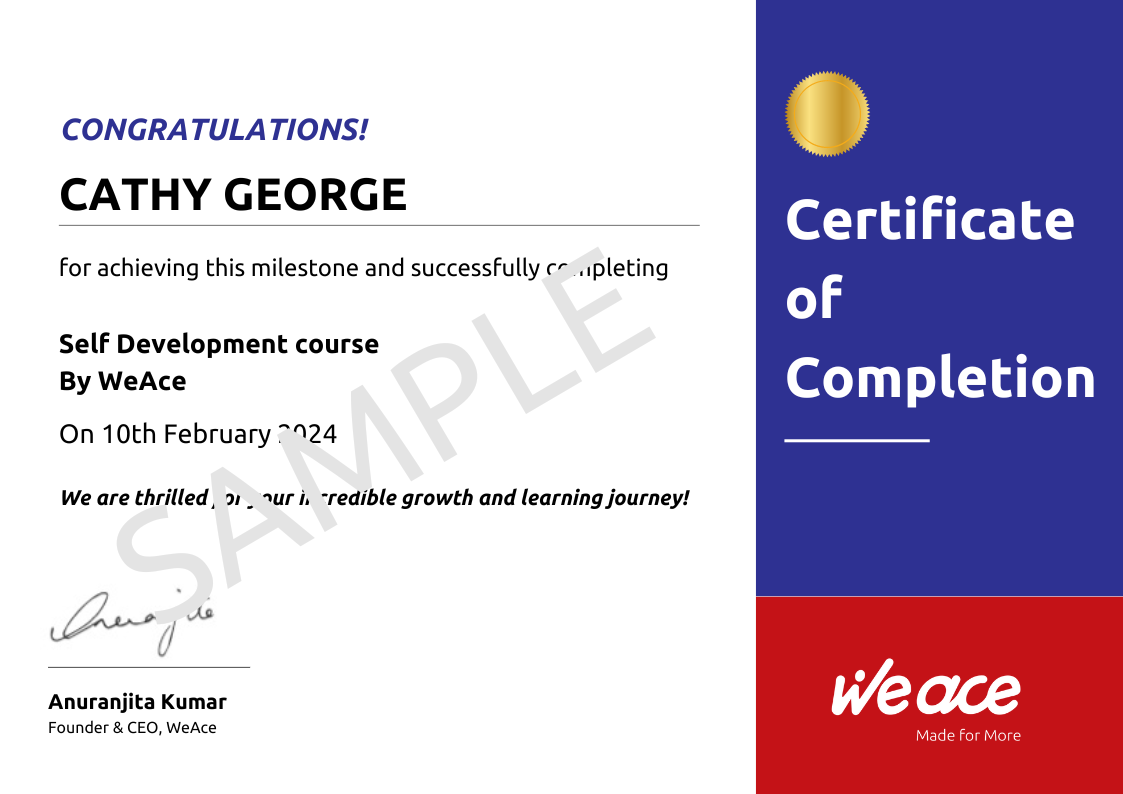Course Details
This is a half-day program for a batch size of 30 professionals.
1. Understanding Time Management
Definition and Importance: Learn what time management is and why it’s crucial in both personal and professional contexts.
Benefits: Explore the advantages of effective time management, including reduced stress, improved productivity, and better work-life balance.
2. Assessing Current Time Usage
Time Audit: Conduct a time audit to understand how you currently spend your time. Identify time-wasters and productivity blocks.
Tools and Techniques: Use tools like time-tracking apps or time logs to get a clear picture of your daily activities.
3. Setting Goals
SMART Goals: Learn about setting Specific, Measurable, Achievable, Relevant, and Time-bound (SMART) goals.
Prioritization: Understand how to prioritize tasks based on urgency and importance using methods like the Eisenhower Matrix.
4. Planning and Scheduling
Daily Planning: Techniques for effective daily planning, such as to-do lists and daily agendas.
Long-term Planning: Strategies for weekly, monthly, and long-term planning to achieve larger goals.
5. Task Management
Breaking Down Tasks: Learn how to break down larger projects into manageable tasks.
Task Delegation: Understand when and how to delegate tasks effectively.
6. Time Management Techniques
Pomodoro Technique: A method involving work intervals of 25 minutes followed by short breaks.
Time Blocking: Allocating specific time slots for different activities to ensure focused work periods.
Batching: Grouping similar tasks together to improve efficiency and reduce the cognitive load of switching tasks.
7. Overcoming Procrastination
Root Causes: Identify the reasons behind procrastination.
Strategies to Combat Procrastination: Techniques like the Two-Minute Rule (if it takes less than two minutes, do it now), setting deadlines, and creating a structured environment.
8. Managing Distractions
Identifying Distractions: Learn to identify common distractions in your environment.
Minimizing Distractions: Strategies to minimize or eliminate distractions, such as creating a dedicated workspace, using apps to block distractions, and setting boundaries with others.
9. Work-Life Balance
Importance: Understand the importance of balancing work and personal life.
Strategies: Techniques to ensure you allocate time for rest, hobbies, and personal relationships alongside professional responsibilities.
For more information on pricing and registration, contact [email protected]
Program Structure
Introduction to Time Management
Goal Setting and Prioritization
Planning and Scheduling
Task Management and Execution
Time Management Techniques
Importance of Work-Life Balance
Get your certificate of completion

-
DURATION 3 Hour(s)
-
LEVEL Entry Level (0-2 years), Junior Level (2-7 years), Mid Level (8-15 years), Senior Level (15+ years)
-
FORMAT Online Instructor Led
-
CERTIFICATION Yes
-
Academy Leadership & Management
-
Topics Time Management
-
KEY LEARNING AREA Time Management,Meeting goals
-
SKILLS Time Management
-
BEST FOR Manager,leadership
-
TRAINER WeAce

/filters:strip_exif()/wocademy/images/logo/QaFjVxdeAn8YX6duqv0cOwkyZ9XDVUh8EqCMTzmQ.png)
 Led
By: WeAce
Led
By: WeAce
 Online
Instructor
Led
Online
Instructor
Led
/filters:strip_exif()/wocademy/images/logo/YQ7PVekR1FqOV8rpOXwb68g4sYIayxIKGACXy5Qr.jpg)
/filters:strip_exif()/wocademy/images/logo/v5Os30zF6SPam8HY34Qqv6u4FRImXFOyOn8uGj6k.jpg)
/filters:strip_exif()/wocademy/images/logo/otJWE8MCMenizuVTe6WrPIYlFnKFympMzOkxhN0r.jpg)